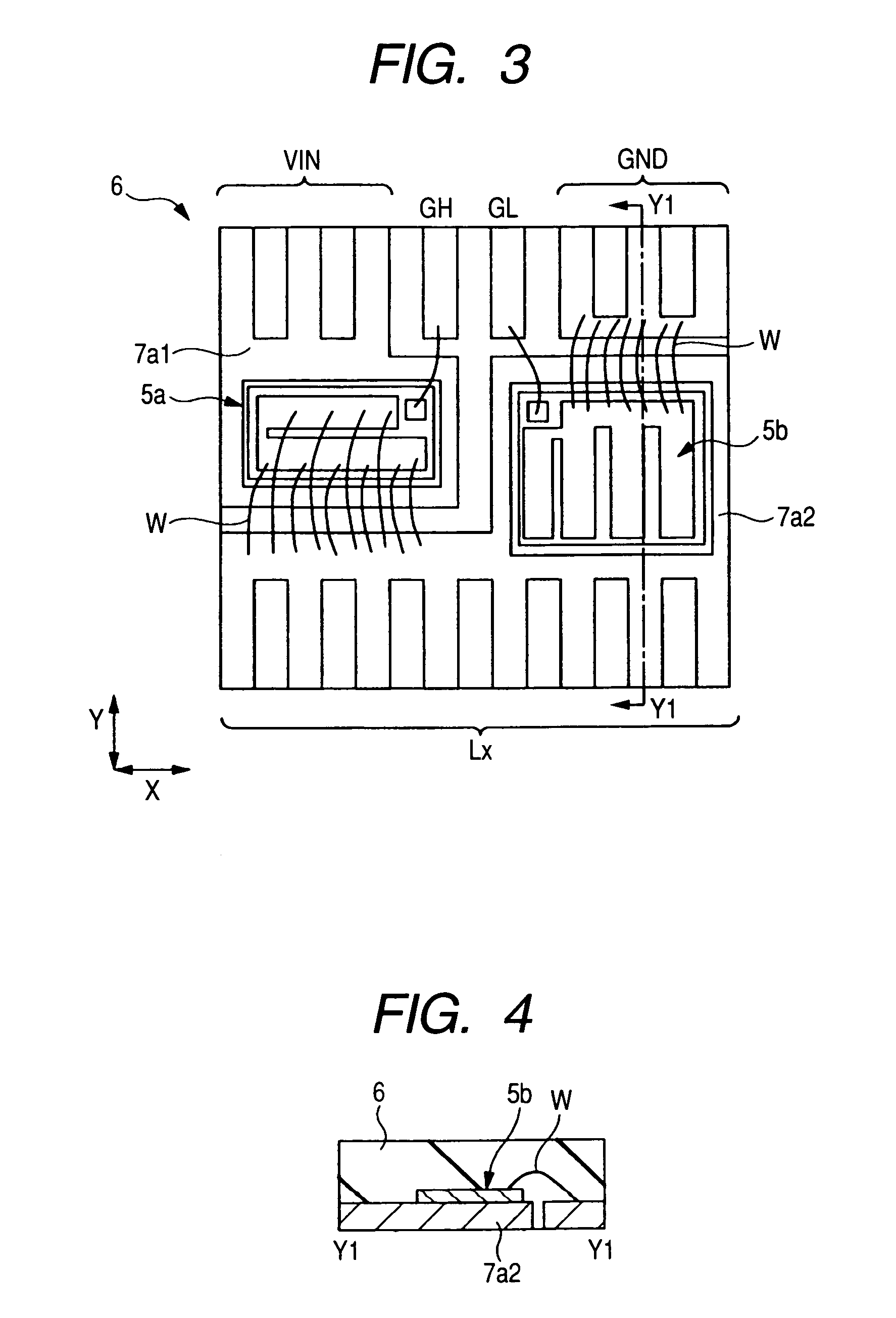Semiconductor device
a semiconductor device and main circuit technology, applied in the direction of electric variable regulation, process and machine control, instruments, etc., can solve the problems of increase in switching loss, etc., to achieve the effect of enhancing power supply efficiency of semiconductor devices, and reducing parasitic inductance of main circuit in power supply circui
- Summary
- Abstract
- Description
- Claims
- Application Information
AI Technical Summary
Benefits of technology
Problems solved by technology
Method used
Image
Examples
first preferred embodiment
[0088]A semiconductor device according to a first embodiment is a non-insulated DC-DC converter employed in a power supply circuit of electronic equipment like, for example, a desktop personal computer, a notebook-size personal computer, a server or a game machine or the like.
[0089]FIG. 1 shows one example of a circuit diagram of a non-insulated DC-DC converter 1 discussed by the present inventors. The non-insulated DC-DC converter 1 has elements like a control circuit 2, a driver circuit 3, power MOS•FETs (hereinafter abbreviated simply as “power MOS”) QH1 and QL1, an input capacitor Cin, an output capacitor Cout and a coil L, etc. Incidentally, symbol D indicates a drain, and symbol S indicates a source, respectively. Symbols L1 through L6 indicate parasitic inductances which are parasitic on a main circuit of the non-insulated DC-DC converter.
[0090]The control circuit 2 is a circuit like, for example, a pulse width modulation (Pulse Width Modulation: PWM) circuit or the like, whi...
second preferred embodiment
[0131]A second embodiment will explain a case in which an n channel horizontal power MOS is used for a high-side power MOS of a non-insulated DC-DC converter. While the present embodiment is identical to FIG. 1 in circuit diagram, each p+ type punch-out layer is used in the n channel horizontal power MOS. Thus, such a configuration that a drain electrode is disposed in a main surface of a semiconductor chip and a source electrode is disposed in a back surface of the semiconductor chip, is taken. Therefore, a die pad can be shared between a high-side power MOS and a low-side power MOS in a similar to the use of the p channel vertical power MOS as in the first embodiment. It is thus possible to reduce the parasitic inductances L3 and L4. The parasitic resistance of each wiring that electrically connects the source of the high-side power MOS and the drain of the low-side power MOS can also be reduced. In the high-side power MOS, switching losses (turn-on loss and turn-off loss) look la...
third preferred embodiment
[0137]A third embodiment will explain a configuration wherein three semiconductor chips constituting a non-insulated DC-DC converter are accommodated within one package.
[0138]FIG. 18 shows an overall plan view illustrating a main surface side of a package 10B employed in the third embodiment, FIG. 19 shows a side view of the package 10B shown in FIG. 18, and FIG. 20 shows an overall plan view illustrating a back surface side of the package 10B shown in FIG. 18, respectively.
[0139]The package 10B of the third embodiment is provided as a QFN (Quad Flat Non-leaded package) configuration, for example. However, the package 10B is not limited to the QFN configuration and can be changed in various ways. The package 10B may be formed as a flat package configuration like, for example, a QFP (Quad Flat Package), an SOP (Small Out-line Package) or the like.
[0140]An encapsulator 6 that constitutes the package 10B has an outward appearance shaped in the form of a thin plate. Back surfaces of two...
PUM
 Login to View More
Login to View More Abstract
Description
Claims
Application Information
 Login to View More
Login to View More - R&D
- Intellectual Property
- Life Sciences
- Materials
- Tech Scout
- Unparalleled Data Quality
- Higher Quality Content
- 60% Fewer Hallucinations
Browse by: Latest US Patents, China's latest patents, Technical Efficacy Thesaurus, Application Domain, Technology Topic, Popular Technical Reports.
© 2025 PatSnap. All rights reserved.Legal|Privacy policy|Modern Slavery Act Transparency Statement|Sitemap|About US| Contact US: help@patsnap.com



